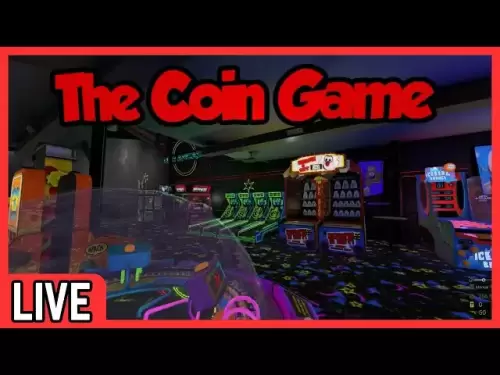 |
|
 |
|
 |
|
 |
|
 |
|
 |
|
 |
|
 |
|
 |
|
 |
|
 |
|
 |
|
 |
|
 |
|
 |
|
Cryptocurrency News Articles
How to Build an Asset Class in Three Easy Steps
Nov 07, 2024 at 02:07 am
Kelly Ye, portfolio manager at Decentral Park Capital and Andy Baehr, head of product at CoinDesk Indices, trade views, active manager vs indexer, on what steps are most important to shape the capital markets and investment landscape for digital assets in a post U.S. election world.

Kelly Ye, portfolio manager at Decentral Park Capital, and Andy Baehr, head of product at CoinDesk Indices, trade views on what steps are most important to shape the capital markets and investment landscape for digital assets in a post U.S. election world.
Election 2024 coverage presented by
Andy: Kelly, the US election has concluded and Trump is headed back to the White House, bolstered by a GOP-lead Senate. Bitcoin has already posted a new all-time high, but we know there is no magic wand to transform crypto into a fully-functioning asset class. How will we get there?
Kelly: Let’s think about three parts: 1) regulatory infrastructure that allows projects to exist and to raise capital; 2) investment infrastructure that connects investors to the capital markets; and 3) an investment framework for allocators, big and small.
Tesla Is Moving Bitcoin; Trump-Supported Token Falls Flat
You're reading Crypto Long & Short, our weekly newsletter featuring insights, news and analysis for the professional investor. Sign up here to get it in your inbox every Wednesday.
Andy: Nicely framed. That’s a lot! Let’s hit topic 1 today: regulatory infrastructure. If crypto is meant to be decentralized, why is the U.S. so important?
Kelly: Though crypto is inherently decentralized, with users and investors worldwide, the U.S. remains crucial due to its concentration of capital and favorable business environment. Globally, investors recognize the U.S. as a hub for technology and innovation. A supportive administration can further enhance this landscape, benefiting the industry. In the long term, as blockchain fosters decentralized trust and governance, societies may organize less by nation and more by shared interests, transcending traditional boundaries.
Andy: From the capital markets side — new projects needing access to investor capital — I agree; it’s hard to build without participation from U.S. lenders and investors. However, for the global markets side — trading, derivatives, services to hedge funds — I think global crypto is doing pretty well, given the obvious constraints. Financial engineering in cities like London, Zurich, Singapore and Hong Kong, with deep talent pools and a history of innovation, is doing well. The U.S. did (impressively, in hindsight) launch futures contracts on bitcoin and ether, a few ETFs and ETF options (soon), but for depth, breadth and innovation, you have to get on an airplane.
Kelly: A primary barrier is the lack of regulatory clarity regarding whether digital assets qualify as securities or commodities. Currently, only bitcoin has a clear classification, while other tokens risk being labeled as unregistered securities. The SEC’s "regulation by enforcement" approach is unsustainable and may deter innovation within the U.S. This also has downstream implications for capital markets, as crypto-focused exchanges and custodians face the risk of offering unregistered securities under SEC guidance.
Andy: Indeed. As you have heard me rant about more than once, the regulatory “jump ball” between the CFTC and SEC is an impediment and a nuisance. This was true with basket swaps when Dodd Frank went into effect 12 years ago and it’s true now with crypto. I think about how the SFC in Hong Kong was out ahead creating regulatory structure around “virtual assets,” acknowledging their special properties and users. Now VARA in Dubai and, of course, MiCA in Europe are following suit in their own way. Much of this regulatory architecture is designed around existing assets and exchanges. You bring up an important point: new blockchain-based projects also deserve a clear path for financing and launch.
Kelly: How would you expect indices to be treated in a best-case scenario?
Andy: If the ultimate regulatory goal is investor protection, indices offer not only diversification of returns, but also of risk. If one index constituent fails, the index will replace it and survive. Not to say this removes risk, but non-systemic failures are not catastrophic. We think this provides a handy solution to regulators for index derivatives and index-based U.S. ETFs: if an index is demonstrably broad-based, it may not be necessary to make specific regulatory determinations about each and every constituent. If regulators insist on asset-by-asset regulation, users become concentrated into a small number of assets, even if those tend to be the largest, like bitcoin and ether.
So, we know what’s on our wish lists, but I guess we should end on an upbeat note. We are impatient, perhaps even frustrated, but also hopeful that the new administration can implement more crypto friendly policies, right, Kelly?
Kelly: Timing is critical, as other countries are competing to create a more favorable environment for blockchain technology builders. We are seeing significant developments with bitcoin, ETH ETFs and the CoinDesk 20 index, which offers investors broad-based exposure to the crypto market. However, to fully capture the growth potential of blockchain technology and its applications, active management expertise is essential
Disclaimer:info@kdj.com
The information provided is not trading advice. kdj.com does not assume any responsibility for any investments made based on the information provided in this article. Cryptocurrencies are highly volatile and it is highly recommended that you invest with caution after thorough research!
If you believe that the content used on this website infringes your copyright, please contact us immediately (info@kdj.com) and we will delete it promptly.






























































